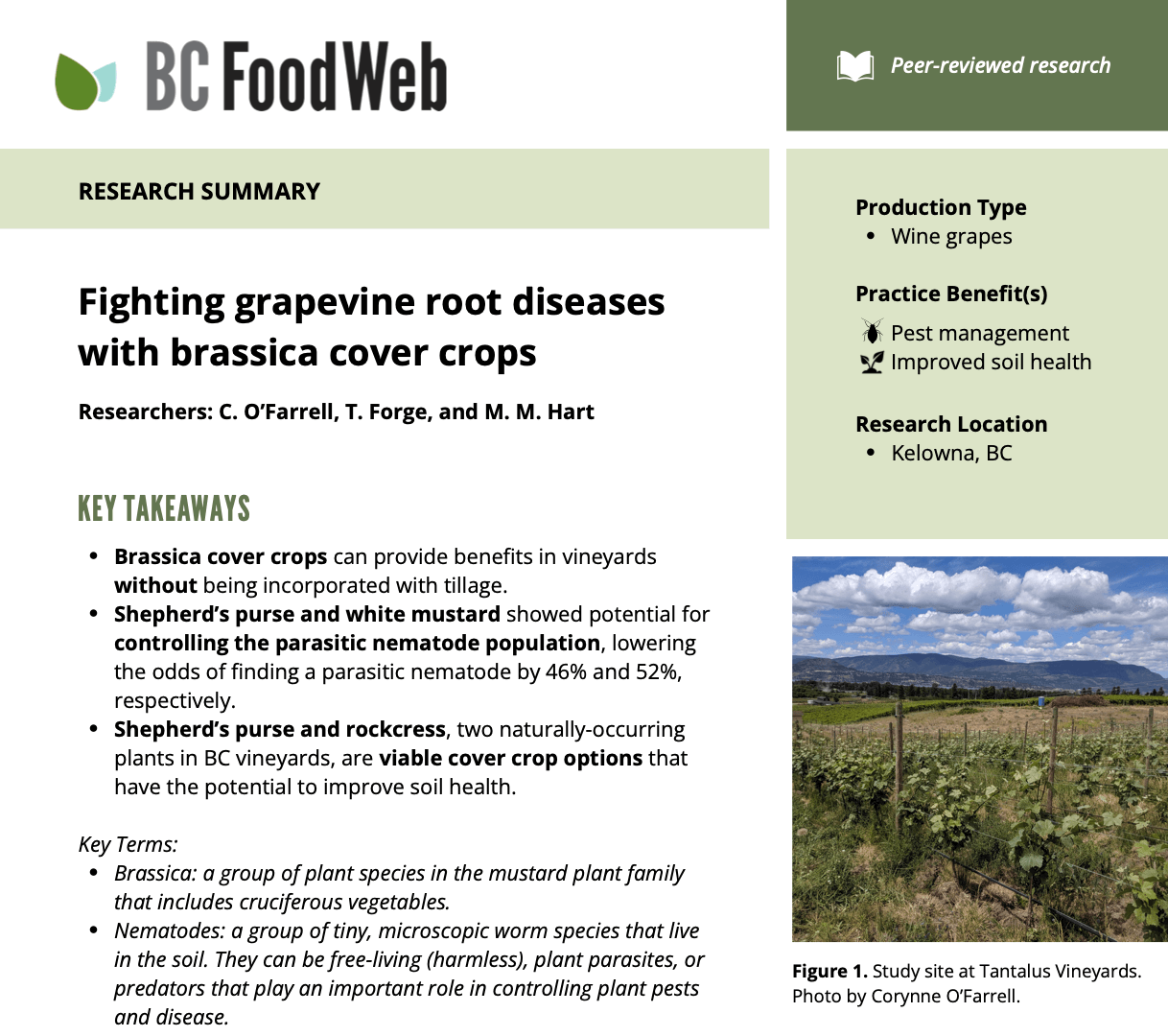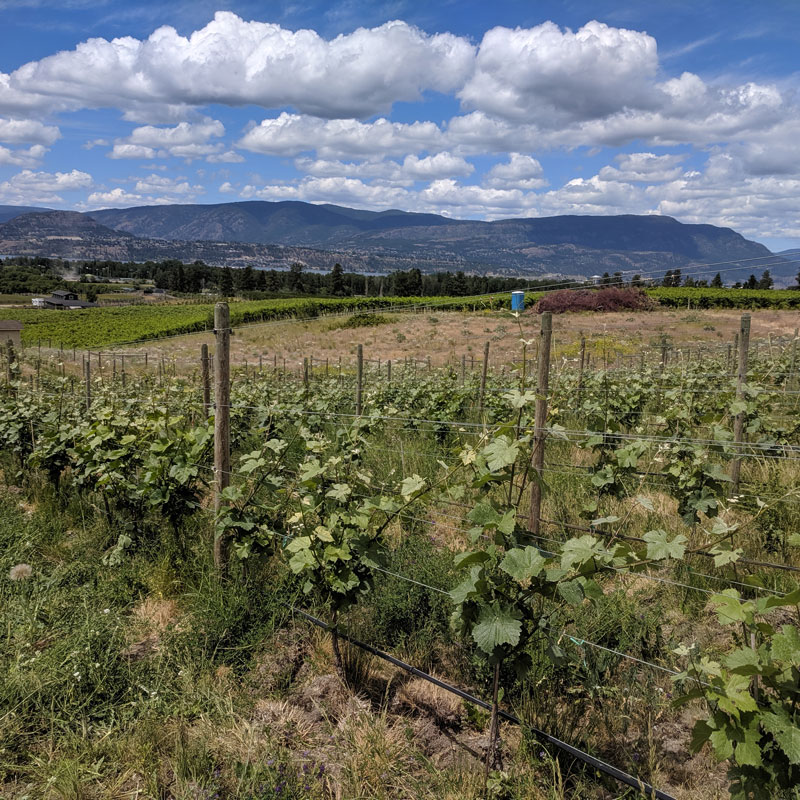Fighting grapevine root diseases with brassica cover crops
Introduction
This study explored the potential of four brassica cover crops to control soil borne pathogens in a no-till, vineyard setting.
Vineyards can suffer significant economic loss due to crop destruction from soil-borne root diseases. This includes fungal trunk diseases found commonly in the Okanagan such as black-foot disease and Petri disease. Parasitic nematodes, such as root-knot and ring nematode, also cause damage to grapevine roots and lead to reduced yield, stunted growth, and/or eventual death of the grapevine.
About this Brief
This brief was prepared by Juliana Cao from the BC Food Web team with the help of Corynne O’Farrell and is based on the following scientific journal article:
O’Farrell, C., Forge, T, & Hart, M. M. (2023). Using brassica cover crops as living mulch in a vineyard, changes over one growing season. International Journal of Plant Biology, 14(4), 1105-1116. https://doi.org/10.3390/ijpb14040081
Key Findings
- Brassica cover crops can provide benefits in vineyards without being incorporated with tillage.
- Shepherd’s purse and white mustard showed potential for controlling the parasitic nematode population, lowering the odds of finding a parasitic nematode by 46% and 52%, respectively.
- Shepherd’s purse and rockcress, two naturally-occurring plants in BC vineyards, are viable cover crop options that have the potential to improve soil health.



